Balkinization
an unanticipated consequence of
Jack M. Balkin
Balkinization Symposiums: A Continuing List
E-mail:
Jack Balkin:
jackbalkin at yahoo.com
Bruce Ackerman
bruce.ackerman at yale.edu
Ian Ayres
ian.ayres at yale.edu
Corey Brettschneider
corey_brettschneider at brown.edu
Mary Dudziak
mary.l.dudziak at emory.edu
Joey Fishkin
joey.fishkin at gmail.com
Heather Gerken heather.gerken at yale.edu
Abbe Gluck abbe.gluck at yale.edu
Mark Graber
mgraber at law.umaryland.edu
Stephen Griffin
sgriffin at tulane.edu
Jonathan Hafetz
jonathan.hafetz at shu.edu
Jeremy Kessler
jkessler at law.columbia.edu
Andrew Koppelman
akoppelman at law.northwestern.edu
Marty Lederman
msl46 at law.georgetown.edu
Sanford Levinson
slevinson at law.utexas.edu
David Luban
david.luban at gmail.com
Gerard Magliocca
gmaglioc at iupui.edu
Jason Mazzone
mazzonej at illinois.edu
Linda McClain
lmcclain at bu.edu
John Mikhail
mikhail at law.georgetown.edu
Frank Pasquale
pasquale.frank at gmail.com
Nate Persily
npersily at gmail.com
Michael Stokes Paulsen
michaelstokespaulsen at gmail.com
Deborah Pearlstein
dpearlst at yu.edu
Rick Pildes
rick.pildes at nyu.edu
David Pozen
dpozen at law.columbia.edu
Richard Primus
raprimus at umich.edu
K. Sabeel Rahmansabeel.rahman at brooklaw.edu
Alice Ristroph
alice.ristroph at shu.edu
Neil Siegel
siegel at law.duke.edu
David Super
david.super at law.georgetown.edu
Brian Tamanaha
btamanaha at wulaw.wustl.edu
Nelson Tebbe
nelson.tebbe at brooklaw.edu
Mark Tushnet
mtushnet at law.harvard.edu
Adam Winkler
winkler at ucla.edu
Compendium of posts on Hobby Lobby and related cases
The Anti-Torture Memos: Balkinization Posts on Torture, Interrogation, Detention, War Powers, and OLC
The Anti-Torture Memos (arranged by topic)
Recent Posts
Fidelity, Translation, and Originalism: Thoughts on Lessig's "Fidelity and Constraint"
Just A Few Blogs
ACS Blog
Alas, a Blog
Althouse
Arts and Letters Daily
Atrios (Eschaton)
Bill of Health
Buzzflash.com
Buzz Machine
Cato at Liberty
Juan Cole (Informed Comment)
Concurring Opinions
The Constitution in 2020
Corrente
Crooked Timber
Daily Howler
Daily Kos
Dana Boyd
Brad DeLong
Digby (Hullabaloo)
Discriminations
Daniel Drezner
Kevin Drum (Mother Jones)
Electrolite
En Banc
Eunomia (Daniel Larison)
Fafblog
Michael Froomkin (Discourse.net)
GovLab (Beth Noveck)
Rick Hasen (Election Law)
History News Network
How Appealing
Ignatz (Sam Heldman)
The Importance of (Ernie Miller)
Infolaw
Instapundit
International Economic Law and Policy Blog
IntLawGrrls
Jacob Levy
Jesus' General
Jurisdynamics
The Kitchen Cabinet
Mark Kleiman
Law Blog Central
Larry Lessig
Lawyers, Guns and Money
Liberal Oasis
Brian Leiter's Law School Reports
The Leiter Reports
Marginal Revolution
Megan McArdle
Memeorandum
Metafilter
Mirror of Justice
The New Republic
Newseum
No More Mister Nice Blog
Brendan Nyhan
Opinio Juris
Orcinus
The Originalism Blog
Pandagon
Passport (Foreign Policy)
Overcoming Bias
Political Animal (Washington Monthly)
Political Theory Daily Review
Political Wire (Taegan Goddard)
The Poor Man
Virginia Postrel
Prawfsblawg
Public Reason
Jonathan Rauch
Raw Story
Redstate
ReligiousLeftLaw.com
Reporters Committee For Freedom of the Press
Reproductive Rights Blog
Rothman's Roadmap to the Right of Publicity
SCOTUS Blog
Seeing the Forest
Clay Shirky
The Shifted Librarian
The Situationist
Larry Solum (Legal Theory)
Andrew Sullivan
Talking Points Memo
Talk Left
Tapped
Tbogg
TechPresident
The Paper Chase (Jurist)
Tom Paine
Tom Tomorrow (This Modern World)
Eve Tushnet
Uggabugga
University of Chicago Law School Faculty Blog
Unqualified Offerings
The Volokh Conspiracy
War and Piece (Laura Rozen)
Wampum
Oliver Willis
Wonkette
Written Description
Matthew Yglesias
Yin
Your Choice of Feeds
1. XML
powered by
2. Atom Feed
3. RSS 2.0
Fidelity, Translation, and Originalism: Thoughts on Lessig's "Fidelity and Constraint"
Guest Blogger
For the symposium on Lawrence Lessig, Fidelity and Constraint: How the Supreme Court Has Read the American Constitution (Oxford University Press, 2019).
Lawrence Solum
Introduction
Lawrence Lessig's Fidelity and
Constraint is an important contribution to American constitutional
theory. Although Lessig packages his ideas as a form of
"originalism," a close reading of his book suggests that his
enterprise is better understood as a version of "living constitutionalism.
Originalism requires constitutional practice to be consistent with the original
meaning of the constitutional text. Lessig's theory sanctions departures
from original meaning in two ways. First, Lessig maintains that
constitutional actors should be guided by two, potentially conflicting, duties
of fidelity: fidelity to role and fidelity two text. Second, Lessig's
understanding of interpretation as translation results in a version of fidelity
to text that permits departures from the actual communicative content of the
text in order to achieve the purposes or functions that the text. When
these two features are combined, the result is a form of living
constitutionalism undermines the rule of law and legitimacy values that provide
the strongest justifications for constitutional originalism.
Originalism
Originalism is best understood as a family of constitutional theories that
affirm two core ideas. The Fixation Thesis claims that
the communicative content of the constitutional text is fixed at the time each
provision is framed and ratified. The Constraint Principle
is the conjunction of three limitations on constitutional actors: (1)
constitutional practice, including the decision of constitutional cases and
issues, must be consistent with the communicative content of the constitutional
text; (2) all of the constitutional text (excluding provisions overridden by
amendment) must be reflected in constitutional doctrine, and (3) constitutional
doctrines must be fairly traceable to the constitutional text. In other words,
constraint requires that the Supreme Court cannot override the constitutional
text in the guise of constitutional interpretation and that the Court cannot
invent constitutional doctrines that are not grounded in the text.
Although originalists agree on the Fixation Thesis and the Constraint
Principle, they disagree on other matters. The dominant form of
originalism is public meaning originalism: the best understanding of original
meaning focuses on the content communicated by the text to the public at the
time each constitutional provision was framed and ratified. But there are
other views on this issue, including original intentions originalism, original
methods originalism, and original law originalism.
Contemporary originalists also disagree about the
interpretation-construction distinction. Many of the so-called "New
Originalists," including Randy Barnett, Keith Whittington, and myself,
affirm a distinction between "Interpretation" (discovering the
meaning of the text) and "construction" (determining the legal effect
given to the text). To the extent that the communicative content of the
constitutional text is underdeterminate (e.g., vague or open textured), the
text creates "construction zones" or sets of issues and cases with
respect to which the text does not fully specify constitutional doctrine.
In these construction zones, courts will need to devise implementing rules or
precisifications that fulfill the purpose of the constitutional provision
within the limits provided by the text. Importantly, there are cases
where the constitutional text is determinate; in such cases, the communicative
content of the constitutional text suffices to resolve the constitutional issue
before the courts.
Is the constitutional theory advanced by Lessig in Fidelity and
Constraint a member of the originalist family of theories? Lessig claims that his theory is a version of
what he call’s two-step originalism:
Lessig’s formulation of step two is imprecise. What does it mean to carry meaning of the
text in its original context into its present context? There are at least two distinct
understandings of step two. Call the
first version, “step two as construction.”
On this version of step two, carrying first step meaning into the
present context involves fixed meaning (step one) that is then applied to the
current context.
Step-two-as-construction would be a member of the originalist family if
step two respects the Constraint Principle: this version of Step Two would
allow for translation within the construction zone but would not allow for
constructions that are inconsistent with the original public meaning of the
constitutional text. Lessig seems to
endorse this understanding in the following passage:
If “admissible meanings of” “the Constitution’s words” are original
meanings, then step two is consistent with the Constraint Principle, but it is
not clear from this passage whether admissible meanings are limited to the
original public meaning of the constitutional text. If Step Two allows for translations that are
inconsistent with the original public meaning of the constitutional text, then
it sanctions violations of the Constraint Principle—and for this reason,
Lessig’s theory would not be a form of originalism.
There is a second possible understanding of step two: call this version
“step-two-as-interpretation.” On this
version, the meaning of the constitutional text is not the original meaning:
instead, judges would construct a counterfactual meaning, imagining that the
constitutional text had been written in the current context. This version of step two is inconsistent with
the Fixation Thesis, and it is not a form of “originalism”—as originalism is
usually understood.
Step-two-as-interpretation substitutes a hypothetical counterfactual
meaning for the original meaning of the constitutional text.
So, readers of Fidelity and Constraint may wonder whether “two-step
originalism” is consistent with the Fixation Thesis and the Constraint
Principle. The beginnings of an answer
to this question can be found in Lessig’s account of fidelity.
Conflicting Fidelities
The conventional originalist understanding of the concept of fidelity is
that constitutional legitimacy requires judges to adhere to the Constraint
Principle. Judges violate their duty of
fidelity to the Constitution, if they engage in constitutional construction
that violates the Constraint Principle.
Lessig has a different understanding; he distinguished between “fidelity
to meaning and fidelity to role.” Lessig
explains:
Lessig’s argument is ingenious and appealing. Living constitutionalist judges frequently
act in ways that may be explained by the idea of fidelity to judicial role that
permits judges to violate the Constraint Principle and update the Constitution
to reflect changing values and circumstances.
Despite the appeal of Lessig’s idea of fidelity to role, originalists can
and should resist this move. First and
foremost, originalists argue that Lessig has a mistaken understanding of the
legitimate role of judges in constitutional cases. Judges swear an oath to “this Constitution,”
the written Constitution of the United States.
Their legitimate role in constitutional cases is bounded by the
Constraint Principle: when they override the constitutional text, they step
outside the legitimate role of judges.
Second, the Lessig’s argument for his conception of judicial role is primarily
based on a description of constitutional practice: Lessig argues that, as a
matter of fact, judges acted in conformity with a nonoriginalist conception of
judicial rule. This is a positive claim,
but it does not provide a normative justification. Originalists argue for the Constraint
Principle on normative grounds: our conception of legitimate judicial role
should not allow for judicial overrides of the original meaning of the
constitutional text.
To the extent that Lessig’s conception of fidelity to judicial role allows
for violations of the Constraint Principle, his theory is a version of living
constitutionalism and not a version of originalism.
There is another difficulty with Lessig’s understanding of fidelity as
involving two conflicting duties—one to role and the other to text. This approach understands fidelity as
involing two potentially conflicting duties.
Sometimes these two duties coincide, but on other occasions they will
conflict. This raises the obvious
question: what should judges do when their duty of fidelity to the
constitutional text conflicts with their duty of fidelity to their
institutional role as judges? It is not
completely clear how Lessig would answer this question, but his theory seems to
assume that in conflict cases, the duty of fidelity to role overrides the duty
of fidelity to text. But if that is the
case, then Lessig’s picture is misleading.
In fact, there is only one duty of fidelity, and that is fidelity to
role. Fidelity to text is merely a
subordinate aspect of fidelity to judicial role.
From an originalist perspective, the notion that fidelity to role is the
paramount judicial duty turns things upside down. Judges swear an oath to “this Constitution,”
not “the role of judge.” The
Constitution creates the Supreme Court, not vice versa. The legitmate power of courts and judges is
that power conferred by the Constitution, not vice versa.
Two Kinds of Translation
There is another aspect of Lessig’s theory that bears on the question
whether “two-step originalism” is really a form of “originalism” as that term
is conventionally understood. Lessig’s
uses the idea of translation as a metaphor for interpretation:
This passage is complex. Much depends
on what Lessig means when he uses the word “meaning.” Originalists understand “meaning” as
communicative content—the meaning that was conveyed by the constitutional text
in the original context of constitutional interpretation. But the word “meaning” is ambiguous. Sometimes we use “meaning” as a synonym for
“purpose.” Other times, we use “meaning”
to refer to “effect.” If Lessig is using
“meaning” in its communicative sense, then his view would be a form of
originalism, but it is unclear (to me) what sense of “meaning” he intends to
employ.
Consider the following additional passage:
In this passage, Lessig seems to recognize the possibility that two-step
originalism involves a departure from the communicative content of the
constitutional text but argues that such departures nonetheless restore the
“Constitution’s meaning to the Framers’ design.” (p. 80)
But what is “the Framers’ design? At
one point, Lessig seems equate “design” with “fundamental principle.” (p. 84),
but none of the eleven passages in which the phrase occurs provides a clear
explanation. The word “design” is
teleological: the clear implication is that the Framers’ design is a function,
goal, or purpose. If this reading of
Lessig is correct, then his theory allows the Supreme Court to override the
original meaning of the constitutional text in order to achieve the purpose,
goal, or functioning of a constitutional provision.
Familiar Difficulties with Purposivism
As should now be clear, it is not easy to identify the precise content of
the theory proposed in Fidelity and Constraint. If that theory is a version of constitutional
purposivism, then it faces some familiar difficulties. It is far from clear that the Framers or
Ratifiers agreed on the purpose, goal, or function associated with at least
some provisions of the Constitution. For
example, high Federalists may have believed that the Necessary and Proper
Clause and the Preamble should function so as to create plenary and virtually
unlimited national legislative power.
Moderate Federalists and others may have understood the goal of
enumeration to be confined national power and the preservation of a substantial
zone of state power that could not be preempted by the national
government. Moreover, purposes, goals,
and functions can be stated in a variety of ways and at different levels of
generality. But in particular cases,
different statements of the purpose, goal, or function may have different
implications for the outcome of the case.
These familiar difficulties led most originalists to abandon the doctrine of
original intent and to focus instead on original public meaning. The constitutional text itself is stated at a
level of generality: some provisions are very concrete and particular; others
are abstract and general. The Framers
and Ratifiers agreed on the constitutional text, which has a public
meaning. Although there may have been
disagreement about the purposes for which the text was adopted, there was
agreement on the words and phrases that made up the constitutional text.
The Normative Implications of Conflicting Fidelities and Purposivist
Translation
So far, we have focused on the question whether two-step originalism is
properly called “originalism.” We have
seen that a case can be made that Lessig’s theory is a version of
nonoriginalist living constitutionalism, but on another understanding his
theory is actually a version of the so-called “old originalism,” which we might
call “original purposes originalism.” Either way, more is at stake than the label
“originalism.” Lessig’s moves to
fidelity to value, loose translation, and two-step originalism have important
normative implications.
The normative implications of two-step originalism can be approached by
comparing Lessig’s theory to purposivism as an approach to statutory
interpretation. Like purposivism,
two-step originalism must deal with the fact that different judges will have
different beliefs about the purpose, goal, or function of various
constitutional provisions. Such beliefs
are likely to be influenced by the judges own moral, political, and ideological
beliefs. Progressives and liberals are
likely to have an expansive view of the original purpose of Article I, Section
8; conservatives and libertarians may well have a narrower view. Public meaning originalism cannot eliminate
these disagreements, but it can confine them to the construction zone—within
the limits imposed by the constitutional text.
The fact of ideologically driven disagreements about purposes, goals, and
functioning has implications for the constitutional system. That system is dynamic, and it involves
political actors, especially the President and the Senate. Once political actors realize that the
ideology of judicial nominees will affect the process of two-step originalism,
they will have powerful incentives to select Supreme Court Justices whose ideology
they favor. On the Court itself,
ideological disagreement among the Justices may result in further
politicization. These dynamic processes
can result in a downward spiral of politicization. Two-step originalism encourages the downward
spiral by freeing the Justices from the binding effect of the constitutional
text.
Conclusion
Lawrence Lessig's Fidelity and Constraint is an important
statement. It aims for a middle path
between an unbounded living constitutionalism and a highly constrained originalism. The idea of a middle path is attractive, but
it may be illusory. In the actual world,
fidelity to role and two-step originalism may loosen the bounds of constraint
and thereby undermine the rule of law.
Lawrence Solum is Carmack Waterhouse Professor of Law at Georgetown University Law Center. You can reach him by e-mail at lsolum@gmail.com
Posted
9:30 AM
by Guest Blogger [link]
Books by Balkinization Bloggers

Gerard N. Magliocca, The Actual Art of Governing: Justice Robert H. Jackson's Concurring Opinion in the Steel Seizure Case (Oxford University Press, 2025)

Linda C. McClain and Aziza Ahmed, The Routledge Companion to Gender and COVID-19 (Routledge, 2024)

David Pozen, The Constitution of the War on Drugs (Oxford University Press, 2024)

Jack M. Balkin, Memory and Authority: The Uses of History in Constitutional Interpretation (Yale University Press, 2024)
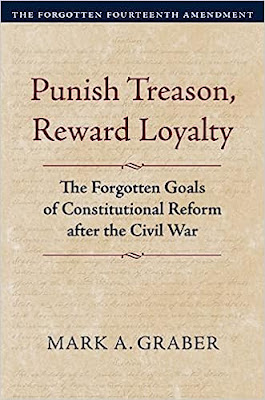
Mark A. Graber, Punish Treason, Reward Loyalty: The Forgotten Goals of Constitutional Reform after the Civil War (University of Kansas Press, 2023)
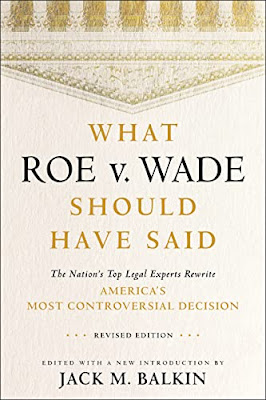
Jack M. Balkin, What Roe v. Wade Should Have Said: The Nation's Top Legal Experts Rewrite America's Most Controversial Decision - Revised Edition (NYU Press, 2023)

Andrew Koppelman, Burning Down the House: How Libertarian Philosophy Was Corrupted by Delusion and Greed (St. Martin’s Press, 2022)

Gerard N. Magliocca, Washington's Heir: The Life of Justice Bushrod Washington (Oxford University Press, 2022)
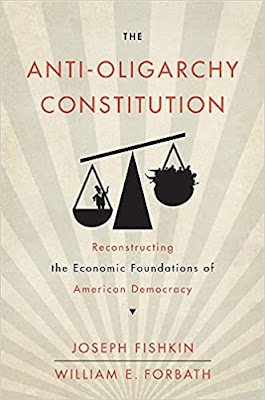
Joseph Fishkin and William E. Forbath, The Anti-Oligarchy Constitution: Reconstructing the Economic Foundations of American Democracy (Harvard University Press, 2022)
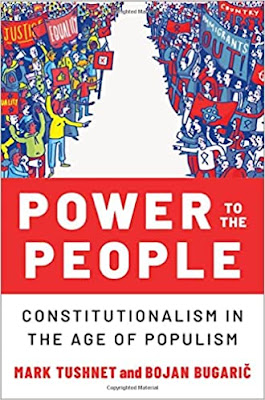
Mark Tushnet and Bojan Bugaric, Power to the People: Constitutionalism in the Age of Populism (Oxford University Press 2021).

Mark Philip Bradley and Mary L. Dudziak, eds., Making the Forever War: Marilyn B. Young on the Culture and Politics of American Militarism Culture and Politics in the Cold War and Beyond (University of Massachusetts Press, 2021).

Jack M. Balkin, What Obergefell v. Hodges Should Have Said: The Nation's Top Legal Experts Rewrite America's Same-Sex Marriage Decision (Yale University Press, 2020)

Frank Pasquale, New Laws of Robotics: Defending Human Expertise in the Age of AI (Belknap Press, 2020)

Jack M. Balkin, The Cycles of Constitutional Time (Oxford University Press, 2020)

Mark Tushnet, Taking Back the Constitution: Activist Judges and the Next Age of American Law (Yale University Press 2020).

Andrew Koppelman, Gay Rights vs. Religious Liberty?: The Unnecessary Conflict (Oxford University Press, 2020)

Ezekiel J Emanuel and Abbe R. Gluck, The Trillion Dollar Revolution: How the Affordable Care Act Transformed Politics, Law, and Health Care in America (PublicAffairs, 2020)

Linda C. McClain, Who's the Bigot?: Learning from Conflicts over Marriage and Civil Rights Law (Oxford University Press, 2020)
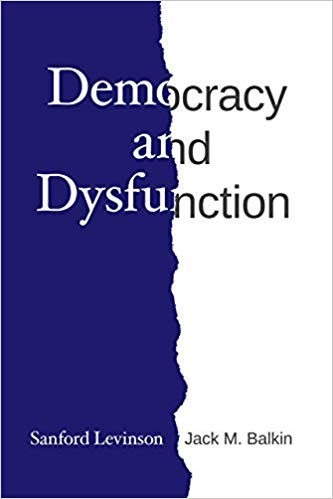
Sanford Levinson and Jack M. Balkin, Democracy and Dysfunction (University of Chicago Press, 2019)

Sanford Levinson, Written in Stone: Public Monuments in Changing Societies (Duke University Press 2018)

Mark A. Graber, Sanford Levinson, and Mark Tushnet, eds., Constitutional Democracy in Crisis? (Oxford University Press 2018)

Gerard Magliocca, The Heart of the Constitution: How the Bill of Rights became the Bill of Rights (Oxford University Press, 2018)

Cynthia Levinson and Sanford Levinson, Fault Lines in the Constitution: The Framers, Their Fights, and the Flaws that Affect Us Today (Peachtree Publishers, 2017)

Brian Z. Tamanaha, A Realistic Theory of Law (Cambridge University Press 2017)

Sanford Levinson, Nullification and Secession in Modern Constitutional Thought (University Press of Kansas 2016)

Sanford Levinson, An Argument Open to All: Reading The Federalist in the 21st Century (Yale University Press 2015)

Stephen M. Griffin, Broken Trust: Dysfunctional Government and Constitutional Reform (University Press of Kansas, 2015)

Frank Pasquale, The Black Box Society: The Secret Algorithms That Control Money and Information (Harvard University Press, 2015)

Bruce Ackerman, We the People, Volume 3: The Civil Rights Revolution (Harvard University Press, 2014)
Balkinization Symposium on We the People, Volume 3: The Civil Rights Revolution

Joseph Fishkin, Bottlenecks: A New Theory of Equal Opportunity (Oxford University Press, 2014)

Mark A. Graber, A New Introduction to American Constitutionalism (Oxford University Press, 2013)

John Mikhail, Elements of Moral Cognition: Rawls' Linguistic Analogy and the Cognitive Science of Moral and Legal Judgment (Cambridge University Press, 2013)

Gerard N. Magliocca, American Founding Son: John Bingham and the Invention of the Fourteenth Amendment (New York University Press, 2013)

Stephen M. Griffin, Long Wars and the Constitution (Harvard University Press, 2013)

Andrew Koppelman, The Tough Luck Constitution and the Assault on Health Care Reform (Oxford University Press, 2013)

James E. Fleming and Linda C. McClain, Ordered Liberty: Rights, Responsibilities, and Virtues (Harvard University Press, 2013)
Balkinization Symposium on Ordered Liberty: Rights, Responsibilities, and Virtues

Andrew Koppelman, Defending American Religious Neutrality (Harvard University Press, 2013)

Brian Z. Tamanaha, Failing Law Schools (University of Chicago Press, 2012)

Sanford Levinson, Framed: America's 51 Constitutions and the Crisis of Governance (Oxford University Press, 2012)

Linda C. McClain and Joanna L. Grossman, Gender Equality: Dimensions of Women's Equal Citizenship (Cambridge University Press, 2012)

Mary Dudziak, War Time: An Idea, Its History, Its Consequences (Oxford University Press, 2012)

Jack M. Balkin, Living Originalism (Harvard University Press, 2011)

Jason Mazzone, Copyfraud and Other Abuses of Intellectual Property Law (Stanford University Press, 2011)

Richard W. Garnett and Andrew Koppelman, First Amendment Stories, (Foundation Press 2011)

Jack M. Balkin, Constitutional Redemption: Political Faith in an Unjust World (Harvard University Press, 2011)

Gerard Magliocca, The Tragedy of William Jennings Bryan: Constitutional Law and the Politics of Backlash (Yale University Press, 2011)

Bernard Harcourt, The Illusion of Free Markets: Punishment and the Myth of Natural Order (Harvard University Press, 2010)

Bruce Ackerman, The Decline and Fall of the American Republic (Harvard University Press, 2010)
Balkinization Symposium on The Decline and Fall of the American Republic

Ian Ayres. Carrots and Sticks: Unlock the Power of Incentives to Get Things Done (Bantam Books, 2010)

Mark Tushnet, Why the Constitution Matters (Yale University Press 2010)
Ian Ayres and Barry Nalebuff: Lifecycle Investing: A New, Safe, and Audacious Way to Improve the Performance of Your Retirement Portfolio (Basic Books, 2010)
.jpg)
Jack M. Balkin, The Laws of Change: I Ching and the Philosophy of Life (2d Edition, Sybil Creek Press 2009)

Brian Z. Tamanaha, Beyond the Formalist-Realist Divide: The Role of Politics in Judging (Princeton University Press 2009)
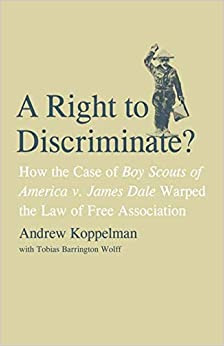
Andrew Koppelman and Tobias Barrington Wolff, A Right to Discriminate?: How the Case of Boy Scouts of America v. James Dale Warped the Law of Free Association (Yale University Press 2009)

Jack M. Balkin and Reva B. Siegel, The Constitution in 2020 (Oxford University Press 2009)
Heather K. Gerken, The Democracy Index: Why Our Election System Is Failing and How to Fix It (Princeton University Press 2009)

Mary Dudziak, Exporting American Dreams: Thurgood Marshall's African Journey (Oxford University Press 2008)

David Luban, Legal Ethics and Human Dignity (Cambridge Univ. Press 2007)

Ian Ayres, Super Crunchers: Why Thinking-By-Numbers is the New Way to be Smart (Bantam 2007)

Jack M. Balkin, James Grimmelmann, Eddan Katz, Nimrod Kozlovski, Shlomit Wagman and Tal Zarsky, eds., Cybercrime: Digital Cops in a Networked Environment (N.Y.U. Press 2007)
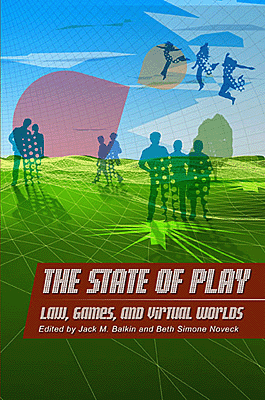
Jack M. Balkin and Beth Simone Noveck, The State of Play: Law, Games, and Virtual Worlds (N.Y.U. Press 2006)

Andrew Koppelman, Same Sex, Different States: When Same-Sex Marriages Cross State Lines (Yale University Press 2006)
Brian Tamanaha, Law as a Means to an End (Cambridge University Press 2006)
Sanford Levinson, Our Undemocratic Constitution (Oxford University Press 2006)
Mark Graber, Dred Scott and the Problem of Constitutional Evil (Cambridge University Press 2006)
Jack M. Balkin, ed., What Roe v. Wade Should Have Said (N.Y.U. Press 2005)
Sanford Levinson, ed., Torture: A Collection (Oxford University Press 2004)
Balkin.com homepage
Bibliography
Conlaw.net
Cultural Software
Writings
Opeds
The Information Society Project
BrownvBoard.com
Useful Links
Syllabi and Exams